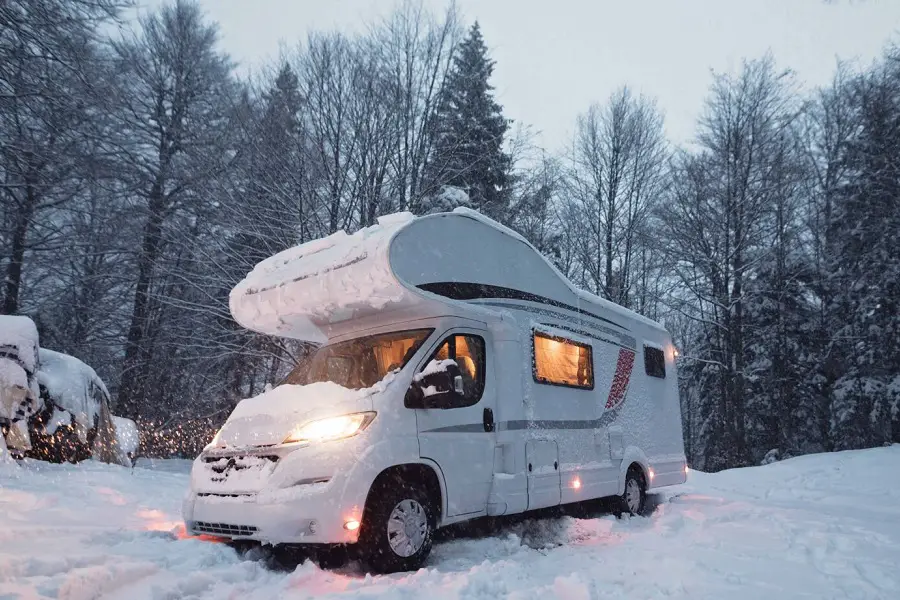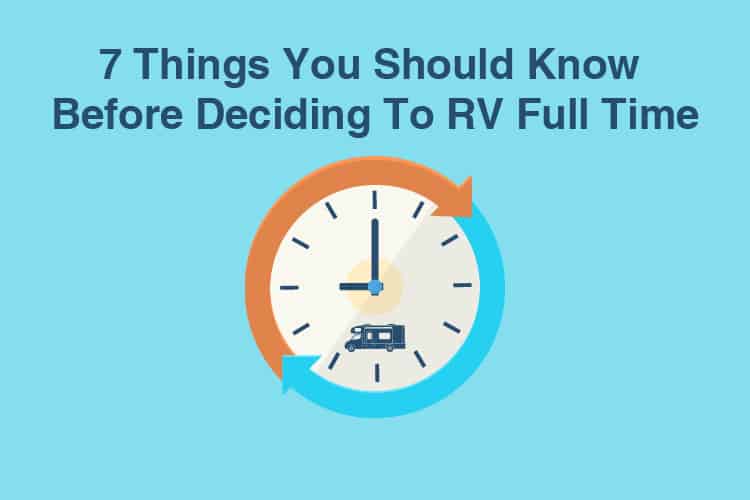Are you looking to winterize an RV camper?
The cold weather can be hard on your recreational vehicle, but with the right preparation and maintenance plan in place, it doesn’t have to stay that way.
We’ll provide tips and tricks for preparing your RV for winter storage, maintaining it during colder months, de-winterizing in springtime and enjoying the great outdoors even when temperatures drop.
Winterize an RV camper now so you can hit the road worry free later!
Preparing Your RV for Winter

Cleaning the Exterior: Before winter sets in, it’s important to give your RV a thorough cleaning.
Start by washing the exterior with soap and water, paying special attention to any areas that may have accumulated dirt or grime over time. Once you’ve finished scrubbing down the outside of your RV, rinse it off with clean water and allow it to dry completely before moving on to the next step.
Sealing and Insulating Windows and Doors: To help keep out cold drafts during winter months, take some time to seal up any cracks around windows or doors using weatherproofing strips or caulking.
Additionally, you can also add insulation around these areas for extra protection against chilly temperatures. Be sure not to forget about vents too! Cover them up with plastic sheets if necessary.
It is also important to protect your RV’s roof from snowfall accumulation throughout wintertime as well as potential leaks caused by ice dams forming along its edges.
Consider applying a protective coating such as rubberized asphalt-based paint which will provide an additional layer of defense against moisture damage while helping prevent rust formation too.
Storing Your RV for Winter
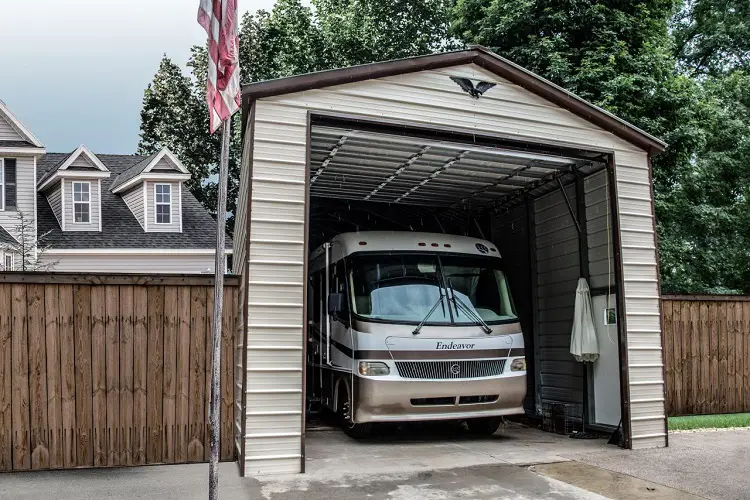
When it comes to storing your RV for winter, the most important factor is finding a suitable storage location.
Look for an area that is sheltered from wind and rain, such as a covered carport or garage. If you don’t have access to one of these options, consider renting space in an indoor storage facility.
Make sure the facility has adequate security measures in place and ask about any additional fees associated with long-term storage.
Preparing the Interior of the RV for Storage: Before putting your RV into storage, make sure to clean out all food items and remove any perishable items like plants or fabrics that could be damaged by cold temperatures.
Also, check all cupboards and drawers to ensure they are empty before closing them up tight. Vacuum carpets and furniture thoroughly so no dirt or debris gets trapped inside during their time in storage.
Finally, disconnect all batteries from appliances and electronics before turning off their power switches – this will help prevent corrosion while your RV is not being used over winter months.
Lastly, inspect seals around doors, windows, and vents regularly throughout the winter season to ensure there are no cracks that need repair work done prior to taking it back out on the road again to come springtime.
Maintaining Your RV During Winter Months
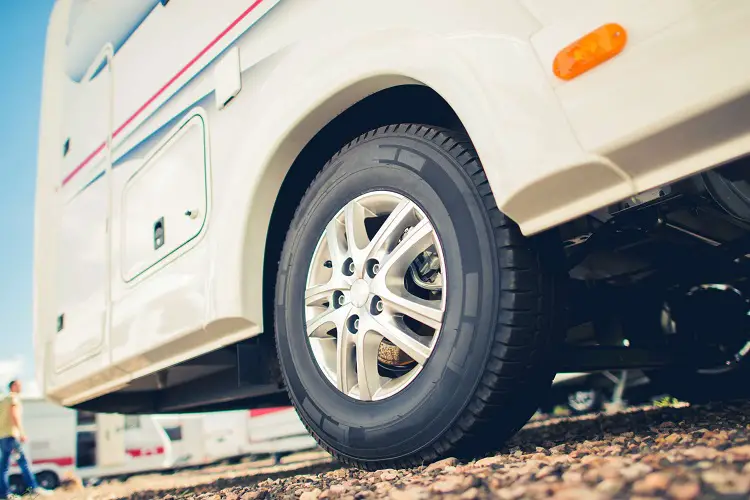
It’s important to take care of your RV during the winter months. Cold weather can cause damage to your vehicle if you don’t properly maintain it. Here are some tips for keeping your RV in good condition during the colder months:
Checking Tire Pressure and Condition Regularly: The cold temperatures can cause tires to lose pressure, so it is important to check them regularly throughout the winter season.
Make sure that all tires are inflated correctly and inspect them for any signs of wear or damage. If you notice any issues, get them fixed as soon as possible before they become a bigger problem.
Inspecting Electrical Systems and Appliances Periodically: It is also important to periodically inspect electrical systems and appliances in your RV during the winter months.
Check all wiring connections, outlets, fuses, breakers, etc., for any signs of corrosion or other damage that could lead to an electrical fire hazard. Also make sure that all appliances are functioning properly by testing each one individually before using them again after storage.
Another key part of maintaining your RV during the winter is making sure that batteries are charged up and ready when needed.
This includes both engine batteries as well as auxiliary batteries used for powering lights or other accessories while camping off-grid in cold weather conditions. It is important to keep these fully charged at all times so they will be ready when you need them most, without any surprises.
De-Winterizing Your RV in Springtime
When it comes to de-winterizing your RV in springtime, there are a few important steps you should take. Replacing fluids, filters, and belts as needed is the first step.
This will ensure that all of the systems in your RV are running smoothly and efficiently after being stored for months during winter. Make sure to check all hoses and connections for any signs of wear or damage before replacing them with new parts if necessary.
Cleaning out any rodent droppings or damage caused by animals during storage is also essential when preparing your RV for springtime use.
Rodents can cause significant damage to wiring and other components inside an RV if left unchecked, so make sure to inspect thoroughly before continuing on with other tasks.
If you find evidence of rodents having been present, contact a professional exterminator immediately to prevent further infestation from occurring later on down the road.
Finally, testing all systems before taking it out on the road again is key when de-winterizing your RV in springtime. Check that everything from brakes and lights to air conditioning units are functioning properly before heading off into warmer weather conditions.
It is also important to check tire pressure regularly throughout the season as temperatures fluctuate; this will help keep you safe while driving long distances in unfamiliar terrain or climates.
Tips for Enjoying an RV in Cold Weather Conditions
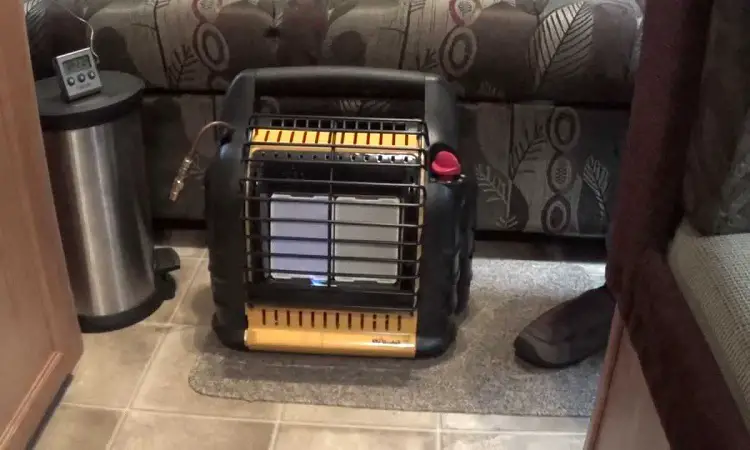
When it comes to enjoying an RV in cold weather conditions, preparation is key. Investing in quality heating solutions can make a world of difference and help keep you warm and comfortable during your winter camping trips.
Look for products that are designed specifically for RVs, such as space heaters or electric blankets, which will provide the most efficient heating solution. Additionally, be sure to dress appropriately when going outside – layers are essential!
Make sure you have an adequate water supply too; frozen pipes can be a real hassle so always carry extra water with you just in case.
Invest in Quality Heating Solutions
Investing in quality heating solutions is one of the best ways to ensure that your RV stays warm and cozy during cold weather conditions. Space heaters are a great option as they provide direct warmth without having to run the furnace all night long.
Electric blankets also work well if you’re looking for something more portable and easy-to-use on colder nights. Both options should be used responsibly though – never leave them unattended or running overnight while sleeping!
Dress Appropriately When Going Outside
Layering up is essential when it comes to staying warm outdoors during winter months!
Start off with some thermal underwear followed by multiple thin layers of clothing such as sweaters or hoodies made from wool or fleece materials – these will trap body heat better than cotton fabrics do.
Don’t forget about hats, gloves, scarves and boots either; these items will go a long way towards keeping you comfortable while exploring nature’s beauty this season!
Make Sure You Have Adequate Water Supply
Frozen pipes can put a damper on any camping trip, so make sure that your RV has enough fresh water stored away before heading out into cold temperatures.
If possible, fill up two large containers with potable drinking water prior to leaving home; this way if one freezes solid then at least there is still another available source of hydration nearby.
Additionally, try not to use too much hot water while showering since this could cause freezing issues down the line as well (especially if the tank isn’t properly insulated).
FAQs in Relation to How to Winterize an RV Camper
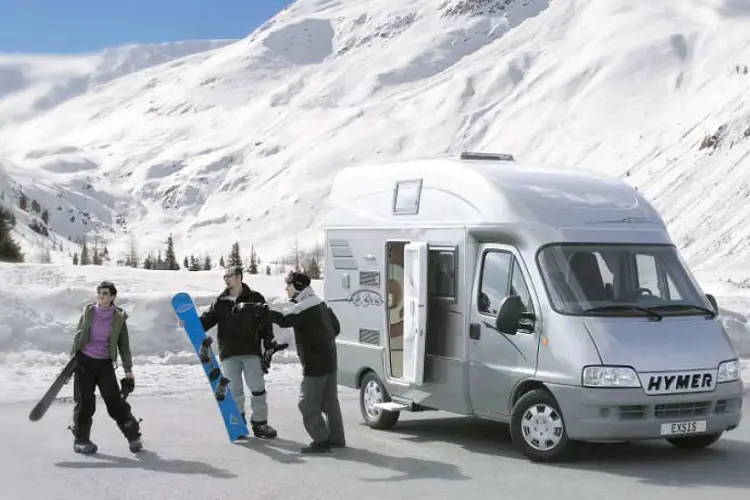
How do you winterize an RV step by step?
Step 1: Drain the RV’s water system. Start by draining all of the fresh, grey and black water tanks. Also, disconnect any hoses or pipes connected to your RV’s plumbing system.
Step 2: Add antifreeze to your plumbing lines and tanks. Use a non-toxic antifreeze that is safe for drinking water systems and follow manufacturer instructions on how much to use in each tank/pipe.
Step 3: Disconnect the battery from your RV if it will be stored outdoors during winter months. This will help prevent damage caused by freezing temperatures or other elements such as moisture or rodents chewing through wires.
Step 4: Cover windows with plastic sheeting to protect them from snow, ice and wind damage over the winter months. Securely attach the plastic sheeting using tape or bungee cords so it won’t blow away in strong winds or storms.
Step 5: Inspect tires for wear before storing your RV for winter months; replace any worn tires before storage begins as cold weather can cause tire cracking which could lead to dangerous driving conditions when you take out your RV again next season!
How do you winterize a camper for beginners?
Winterizing a camper is an important step to ensure your RV is ready for the cold winter months. Start by draining all water from the system, including tanks and lines. Next, flush out any remaining water with antifreeze and fill up the fresh water tank with it as well.
Finally, lubricate all moving parts such as door locks and hinges to prevent rusting or freezing in place. Once complete, you can be sure that your camper will remain safe during the winter season!
How cold can it get before I have to winterize my camper?
The temperature at which you should winterize your camper depends on the type of RV and where it is located. Generally, when temperatures drop below freezing (32°F or 0°C), it’s time to winterize.
This includes draining all water tanks, adding antifreeze to the plumbing system, removing batteries from appliances, and covering any exposed areas with insulation or a tarp. Taking these steps will help protect your camper from damage caused by cold weather conditions.
Can you winterize your RV yourself?
Yes, you can winterize your RV yourself. It is important to take the necessary steps to ensure that your RV is properly prepared for cold weather conditions.
Start by draining all water from the system and adding antifreeze to prevent freezing. Make sure to also inspect hoses and seals for any signs of wear or damage.
Finally, check on propane tanks and other appliances before storing them away in a safe place until springtime arrives again. With these simple steps, you can winterize your RV yourself with ease!
Conclusion
Winterizing your RV camper is an important step to ensure it remains in good condition during the cold winter months.
Taking the time to properly prepare and store your RV, as well as maintain it throughout the season, will help you get back on the road quickly when spring arrives. With a few extra steps, you can even enjoy camping in colder weather conditions!
Winterizing an RV camper doesn’t have to be a daunting task – just follow these simple tips and you’ll be ready for whatever Mother Nature throws at you this winter.
Are you ready to take on the challenge of winterizing your RV camper?
Winterizing an RV camper is not a simple task, but with proper preparation and knowledge, it can be done. Whether you are a novice or an experienced outdoorsman, our Kempoo guide will provide step-by-step instructions for successfully winterizing your vehicle so that it’s ready for any adventure this season!
Don’t wait – start prepping now and enjoy all that nature has to offer during the cold months ahead.


